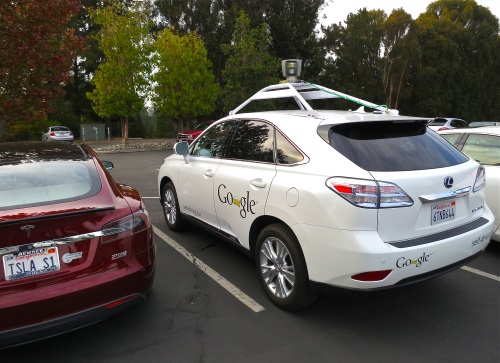A new AAA survey on automated vehicles reveals that only one in 10 of the 1,301 U.S. drivers it polled – just 12 percent – would “trust riding in a self-driving vehicle,” while another 28 percent of those polled said they “don’t know how they feel” about the technology.
[Above photo via Google.]
According to Greg Brannon, AAA’s director of automotive engineering and industry relations, those results indicate “consumers are stuck in neutral” in terms of accepting self-driving cars.

Those findings also mirror results from a similar survey conducted in 2019, which found that 71 percent of those polled were “afraid” to ride in fully self-driving vehicles; a result of what the organization called several “high-profile” autonomous vehicle crashes.
AAA added that its most recent self-driving vehicle poll – conducted in mid-January with U.S. adult drivers 18 years or older – also discerned a “desire” on the part of motorists to see more “news stories or public information” on key issues surrounding self-driving vehicles, such as safety and liability.
Those findings include:
- 57 percent of those surveyed said they would like to have a clear understanding of who will be legally responsible in the event of a crash with a self-driving vehicle.
- 51 percent are interested about laws to make sure self-driving cars are safe.
- 49 percent want to know how vulnerable they will be to hackers.
“Knowing how people truly feel about self-driving cars will help the industry to identify the steps needed to move consumers towards greater acceptance,” added Brannon.

Rep. Frank Pallone, Jr., D-N.J., chairman of the House of Representatives Committee on Energy and Commerce made similar points during a hearing on February 11.
“Safety and deployment must come hand in hand – we cannot have one without the other,” Rep. Pallone said. “Because, ultimately, public acceptance of self-driving cars depends on their reliability and safety. Troubling safety incidents, regulatory black holes, and lax oversight threaten to disrupt this critical balance and the future of this technology itself.”
 Nation
Nation
The Stream by AASHTO: Electrified Roadway Testing
December 5, 2025 Nation
Nation

